In today’s rapidly changing world, the possibility of a societal breakdown, though unsettling, cannot be entirely dismissed. Such a breakdown can stem from a myriad of causes, each intertwining and escalating the severity of the situation.
Discover the essential items you need to survive a societal collapse. This comprehensive guide covers food, first aid, tools, and more to keep you safe and self-sufficient.
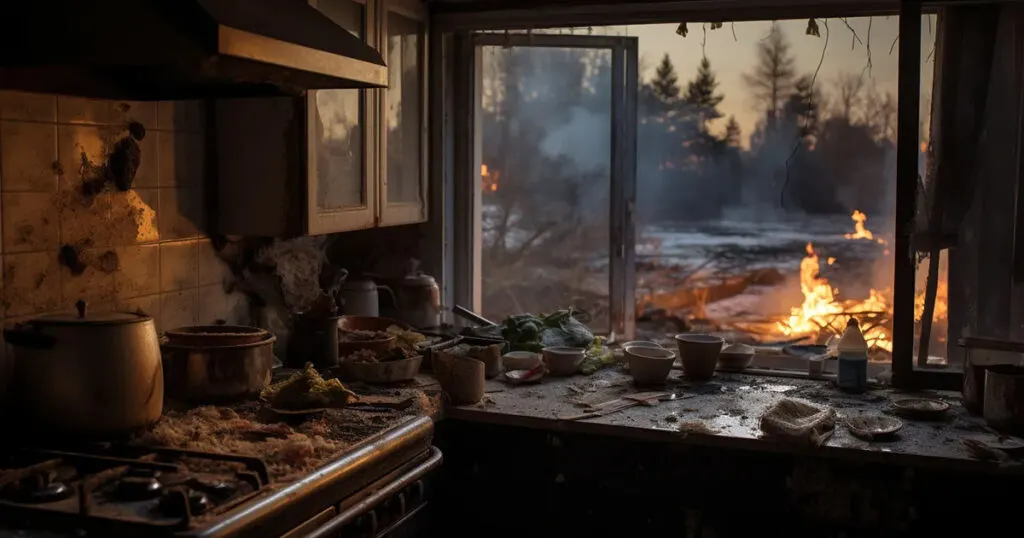
FIRST: Understanding these potential triggers is the first step in preparing for and, hopefully, preventing a complete collapse. Below, we explore some of the key factors that could contribute to a societal breakdown, painting a picture of the challenges we may face.
List of Potential Causes for Societal Breakdown:
- Natural Disasters: Earthquakes, hurricanes, floods, and other severe natural events can disrupt infrastructure and resources, leading to societal instability.
- Economic Collapse: Severe economic downturns or crashes can lead to widespread unemployment, loss of savings, and a breakdown in financial systems.
- Pandemics: Widespread health crises, like pandemics, can strain healthcare systems, disrupt global supply chains, and lead to significant loss of life and social panic.
- Political Instability: Governmental collapse, coups, or severe political unrest can disrupt social order and lead to chaos and lawlessness.
- Technological Failures: Major failures in critical infrastructure, such as power grids or cyber networks, can lead to widespread disruption in communication, transportation, and essential services.
- Resource Scarcity: Shortages of water, food, or energy sources can lead to competition, conflict, and social unrest.
- War and Armed Conflicts: Wars, whether civil or international, can devastate countries, displacing millions and destroying the fabric of societies.
- Social Fragmentation: Deepening divisions within society, whether ideological, religious, or cultural, can erode trust and cooperation, leading to societal breakdown.
- Globalization Backlash: A backlash against global interconnectedness can lead to isolationism, disrupting international cooperation and trade, essential for modern societies.
- Water and Water Purification Tools:
- Priority: Clean drinking water.
- Tools: Water filters, purification tablets, storage options.
- Non-Perishable Food:
- Stock up: Canned goods, dried foods, and other long shelf-life items.
- First Aid Kit:
- Essentials: Medications, antiseptics, bandages.
- Include personal medications.
- Tool Kit:
- Importance: Essential for fixing and repairing.
- Portable Power Source:
- Types: Solar chargers, batteries, portable generators.
- Use: Provides power when the grid is down.
- Heating and Cooking Tools:
- Supplies: Propane or wood.
- Tools: Necessary equipment for warmth and cooking.
- Fire Starting Tools:
- Items: Ferro rod, matches, tinder.
- Communication Devices:
- Devices: Battery-powered or hand-crank radios, walkie-talkies.
- Purpose: For receiving news and local communication.
- Sanitation Supplies:
- Consider: Baking soda and vinegar for cleaning and hygiene.
- Weapons and Ammunition
- Types: Firearms, bow and arrows.
- Purpose: Essential for hunting and defense.
- Bonus: Bartering Items
- Liquor
- Ammunition (even if you don’t own a firearm)
Clean Drinking Water: Priority #1
In any scenario of societal breakdown, securing a reliable source of clean drinking water becomes your priority. Water is essential for life, and its scarcity or contamination can quickly escalate into a survival crisis. In the absence of a functioning public water supply, alternative methods of obtaining and purifying water become crucial.

Check this out: Water Purification Methods
Importance of Water in Survival Situations
The human body can survive for weeks without food, but only a few days without water. Water is not just essential for drinking; it’s also crucial for hygiene and food preparation. In a breakdown scenario, the risk of waterborne diseases can increase dramatically, making clean water even more vital.
Tools for Water Purification
- Water Filters: Portable water filters are a practical solution for purifying water from natural sources like rivers, lakes, or rainwater. They can remove bacteria, protozoa, and sometimes even viruses, depending on the filter’s quality.
- Purification Tablets: These are lightweight and easy to store. Water purification tablets, typically containing iodine or chlorine dioxide, can kill pathogens in water, making it safe to drink.
- Boiling: Boiling water is one of the most effective methods to purify it. In situations where filters or tablets are not available, boiling water for at least one minute can make it safe for consumption.
Water Storage Options
In addition to purification, storing water is equally important. In a societal breakdown, having a stockpile of water can provide immediate relief before setting up a sustainable purification system. Commercially bottled water has a long shelf life, but for larger quantities, consider using food-grade water storage containers. These containers should be kept in a cool, dark place and treated with water preservatives to extend their shelf life.
Stocking Up on Non-Perishable Food
In the face of societal breakdown, having a reliable food supply is as crucial as water. Non-perishable food items, known for their long shelf lives and minimal preparation requirements, become invaluable in such scenarios. These foods can sustain individuals and families when regular food sources are unavailable or unsafe.
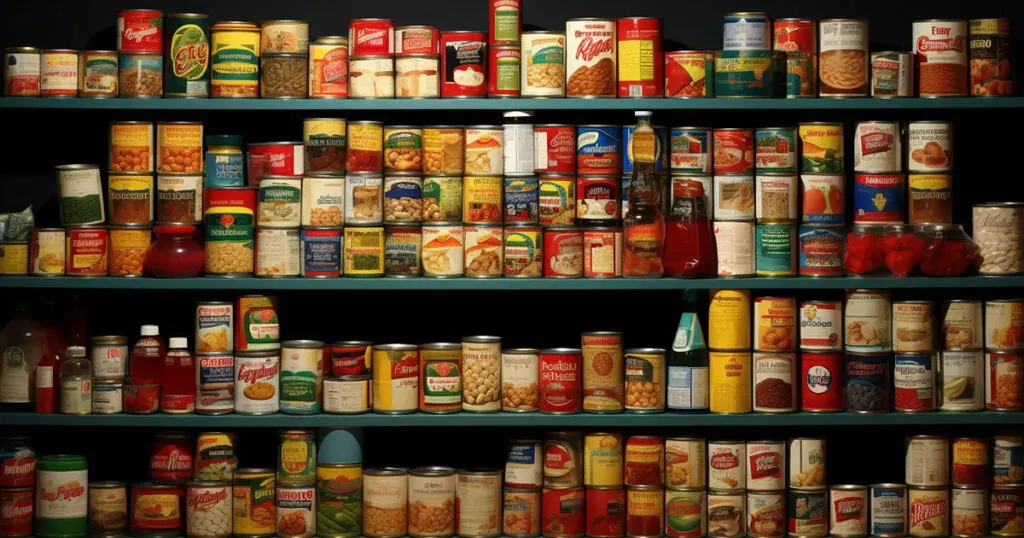
Check this out: Stocking Up on Long Shelf-Life Items for Disaster Preparedness
The Importance of Non-Perishable Foods
Non-perishable foods are essential for several reasons. They provide necessary nutrition during emergencies, require no refrigeration, and are typically easy to prepare, often needing just water or no preparation at all. In a situation where resources are scarce, and cooking options are limited, these foods can be lifesavers.
Types of Non-Perishable Foods to Stock
- Canned Goods: Canned vegetables, fruits, meats, and soups can last for years. They are ready to eat, requiring no additional water or cooking, which is invaluable when resources are limited.
- Dried Foods: Items like rice, beans, lentils, pasta, and powdered milk have long shelf lives and are compact for storage.
- Dehydrated or Freeze-Dried Foods: These are lightweight, take up little space, and can be rehydrated with water. They include meals, fruits, vegetables, and even meats.
- Energy Bars and Non-Perishable Snacks: High-energy foods like granola bars, pemmican, nuts, and dried fruits are excellent for quick energy boosts and require no preparation.
Considerations for Stocking Non-Perishable Foods
It’s important to rotate your stock to keep it fresh and use the oldest items first. Additionally, keep an eye on the nutritional content — a balance of proteins, carbohydrates, and fats is important for maintaining health in stressful situations.
Building a Comprehensive First Aid Kit
In any emergency, particularly during a societal breakdown, access to medical facilities may be limited or non-existent. This makes having a well-stocked first aid kit with essential supplies, including medications, antiseptics, and bandages, a critical component of your preparedness plan. Including personal medications in this kit is also vital for those with specific health needs.
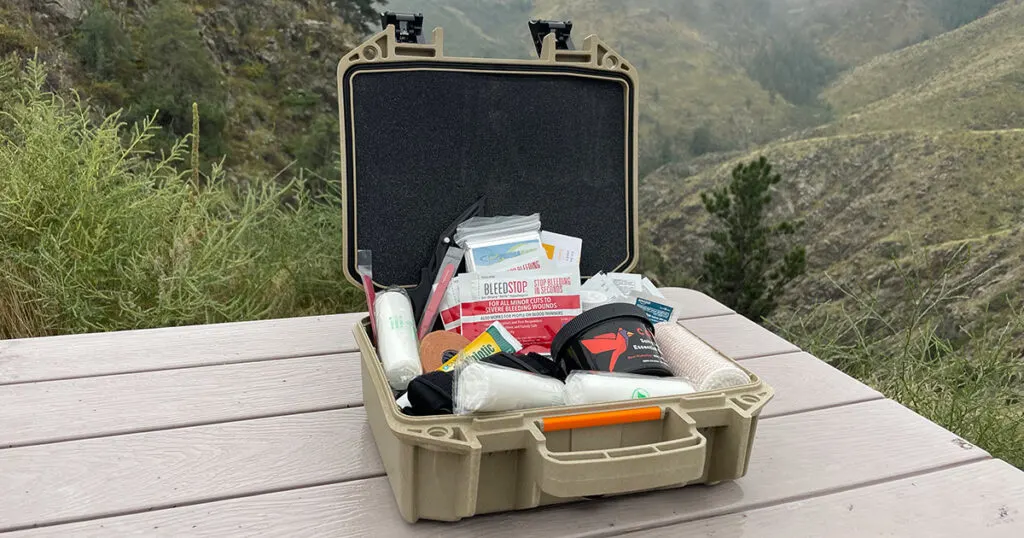
Check this out: Building a High-Quality Personal Medical Kit
The Essentials for a First Aid Kit
A robust first aid kit should be equipped to handle a variety of medical situations, from minor injuries to more serious conditions. Here are some key items to include:
- Medications: Over-the-counter medications such as pain relievers (like ibuprofen or acetaminophen), anti-diarrhea medication, antacids, and allergy medications are smart to have. It’s also wise to have a supply of any prescription medications you or your family members regularly require.
- Antiseptics: Items for wound cleaning and disinfection are essential. This includes antiseptic wipes or iodine solutions. Alcohol pads are also useful for sterilizing instruments or skin before minor procedures.
- Bandages and Wound Dressings: A variety of bandages, including adhesive bandages, gauze pads, roll gauze, and adhesive tape, are necessary for dressing wounds. Include also elastic bandages for sprains and strains.
Personal Medications and Special Needs
In addition to general first aid supplies, it’s crucial to consider personal medical needs:
- Prescription Medications: Ensure a sufficient supply of any regular prescription drugs, such as those for heart conditions, diabetes, asthma, or high blood pressure.
- Specialized Items: Depending on individual health conditions, items like inhalers, EpiPens, blood pressure monitors, or glucose testing kits might be necessary.
Regular Review and Maintenance of Your First Aid Kit
Regularly review and maintain your first aid kit. Check expiration dates of medications and replace any used or outdated items. It’s also a good idea to familiarize yourself with the basic first aid procedures, as these skills can be as vital as the kit itself in an emergency.
The Essential Role of a Tool Kit in Emergency Preparedness
In the midst of a societal breakdown, the ability to perform basic repairs and maintenance becomes crucial. A well-equipped tool kit is indispensable, serving as a means to fix, build, or modify necessary items for survival. The importance of having a diverse set of tools cannot be overstated, as they empower you to address a wide range of challenges that may arise.

Check this out: Building a Proper Car Survival Kit
Key Components of a Versatile Tool Kit
A comprehensive tool kit should include a variety of tools to handle different tasks. Here are some essential tools to consider:
- Multi-Tool: A good quality multi-tool can serve many purposes, including cutting, gripping, and screwing. It’s a compact solution for a variety of tasks.
- Screwdrivers: A set of screwdrivers of various sizes and types (Phillips and flat-head) is essential for assembling and disassembling items.
- Pliers and Wrenches: These are necessary for gripping, bending, and tightening. Adjustable wrenches and a set of pliers including needle-nose and locking pliers can be very useful.
- Hammer: A sturdy hammer is useful not just for driving nails but also for small demolition tasks.
- Saws: A handsaw or a hacksaw can be crucial for cutting wood or metal, respectively.
- Tape Measure and Level: For any construction or repair work, accurate measurement and alignment are key.
- Utility Knife: A sharp knife is indispensable for cutting various materials.
- Duct Tape and Super Glue: For quick fixes, nothing beats the versatility of duct tape and super glue.
The Importance of Tool Maintenance and Skills
Having a tool kit is just the first step. It’s equally important to maintain these tools to keep them in good working order. Regular cleaning, sharpening of blades, and proper storage will extend their life and ensure they are ready when needed.
Additionally, familiarizing yourself with basic repair and maintenance skills is crucial. In a situation where professional help is not available, these skills can make a significant difference in your ability to manage and adapt to the challenges at hand.
Check this out: From Tactical Training to Homesteading: Top Books for Self-Reliance
Securing Energy Independence with Portable Power Sources
In the event of a societal breakdown, one of the most significant challenges can be the loss of the electrical grid. This makes having a portable power source an essential aspect of preparedness planning. Portable power sources, such as solar chargers, batteries, and generators, provide a lifeline by powering essential devices and equipment when traditional power sources fail.
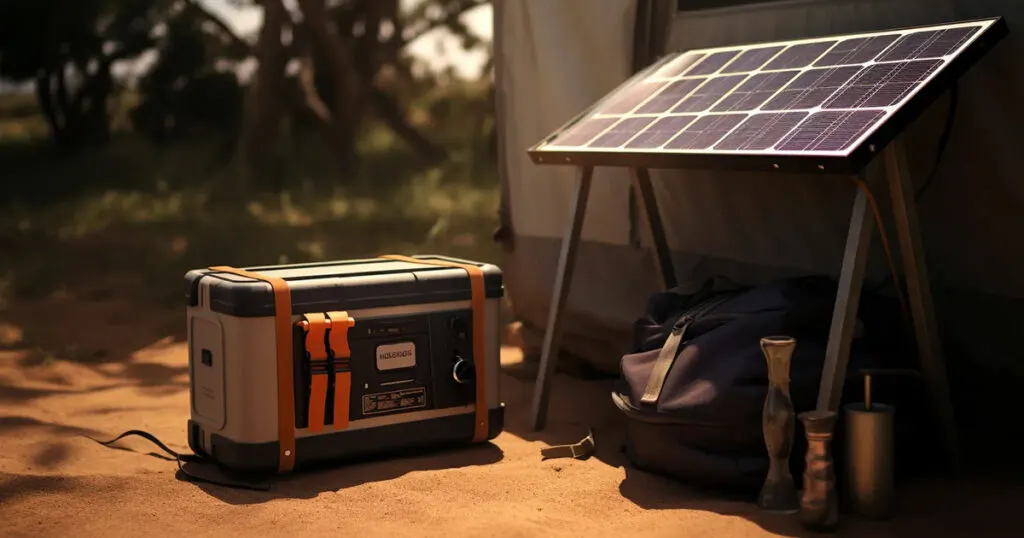
Types of Portable Power Sources
- Solar Chargers: These are sustainable and renewable power sources, ideal for charging small devices like smartphones, tablets, and rechargeable batteries. Solar panels range from small, foldable units to larger, more powerful setups.
- Batteries: Rechargeable battery packs can store energy for use when needed. Larger deep-cycle batteries can power more significant devices for extended periods.
- Portable Generators: For higher power needs, portable generators can be invaluable. They can run on various fuels like gasoline, diesel, or propane. However, they require proper ventilation and fuel storage considerations.
The Utility of Portable Power in Emergencies
In a scenario where the grid is down, portable power sources can be lifesavers. They can be used for:
- Lighting: Powering LED lights and lanterns for visibility during power outages.
- Communication: Keeping communication devices like phones and radios charged is crucial for staying informed and connected.
- Medical Equipment: For those reliant on powered medical devices, a reliable power source can be a matter of life and death.
- Cooking and Heating: Small electric stoves or heaters can be powered for cooking and warmth.
- Tool Operation: Powering electric tools for repairs and construction work.
Considerations for Choosing and Using Portable Power
When selecting a portable power source, consider the specific needs and the likely duration of power outages. Solar chargers are excellent for long-term, sustainable energy, especially in sunny climates. Battery packs are more portable and convenient for short-term use. Generators offer more power but require fuel and maintenance.
Essential Heating and Cooking Tools for Survival
In a societal breakdown, the ability to cook food and stay warm becomes a critical survival skill. This necessitates having the right supplies and tools for heating and cooking. Relying on traditional utilities might not be an option, so alternative methods such as using propane, wood, and other resources become indispensable.
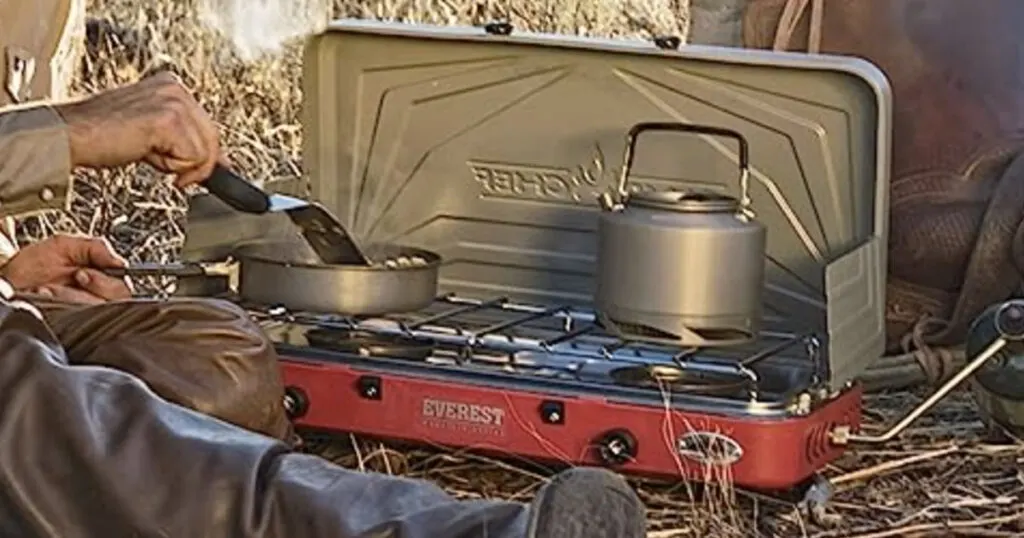
Supplies for Heating and Cooking
- Propane: Portable and relatively easy to store, propane can be used for both cooking and heating. Propane stoves and heaters are efficient and can be used indoors with proper ventilation.
- Wood: In many situations, wood is a readily available resource for heat and cooking. Wood-burning stoves or fireplaces can provide warmth and a means to cook, but require proper installation and ventilation.
Tools for Effective Heating and Cooking
- Stoves: Portable camping stoves, wood stoves, or propane stoves are essential for cooking meals.
- Cookware: Durable cookware that can withstand high heat and rough use is crucial. Cast iron pans and pots are ideal.
- Utensils: Basic cooking utensils like spatulas, ladles, and can openers are necessary.
- Insulation: For heating, having proper insulation in your living space can conserve heat, making fuel sources more efficient.
The Necessity of Reliable Fire Starting Tools
Alongside heating and cooking tools, having reliable fire starting tools is essential. These tools are not just for convenience but can be lifesaving in cold conditions or when needing to purify water or cook food.
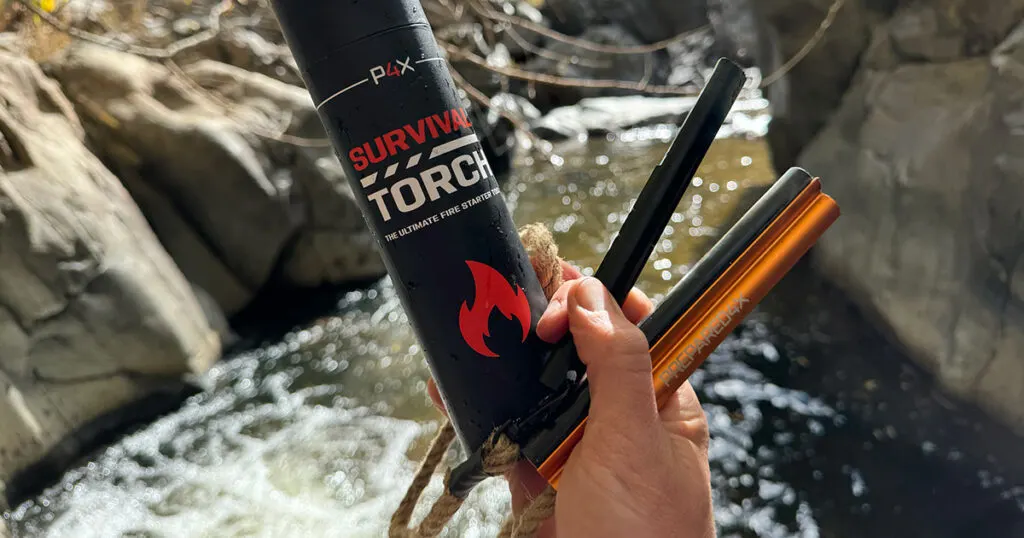
Check this out: Survival Torch (Lighting Fires Made Easy)
Essential Fire Starting Items
- Ferro Rod: A ferrocerium rod can produce sparks in any weather condition, making it a reliable tool for starting fires.
- Matches: Waterproof or stormproof matches are preferable for their resilience in harsh conditions.
- Tinder: Having a supply of tinder, such as dry lint, cotton balls soaked in petroleum jelly, or commercial fire starters, can make the process of starting a fire much easier.
Tips for Effective Fire Management
- Practice: Knowing how to start a fire efficiently is as important as having the tools. Practice in different conditions to build this skill.
- Safety: Always prioritize safety when handling fire, especially indoors or in dry, wooded areas.
- Storage: Keep your fire starting tools in a dry, accessible place to ensure they are ready when needed.
Staying Connected: The Importance of Communication Devices
In the event of a societal breakdown, staying informed and being able to communicate with others becomes crucial. Traditional communication networks might be unreliable or non-existent, making alternative communication devices like battery-powered or hand-crank radios and walkie-talkies essential tools for receiving news and maintaining local communication.
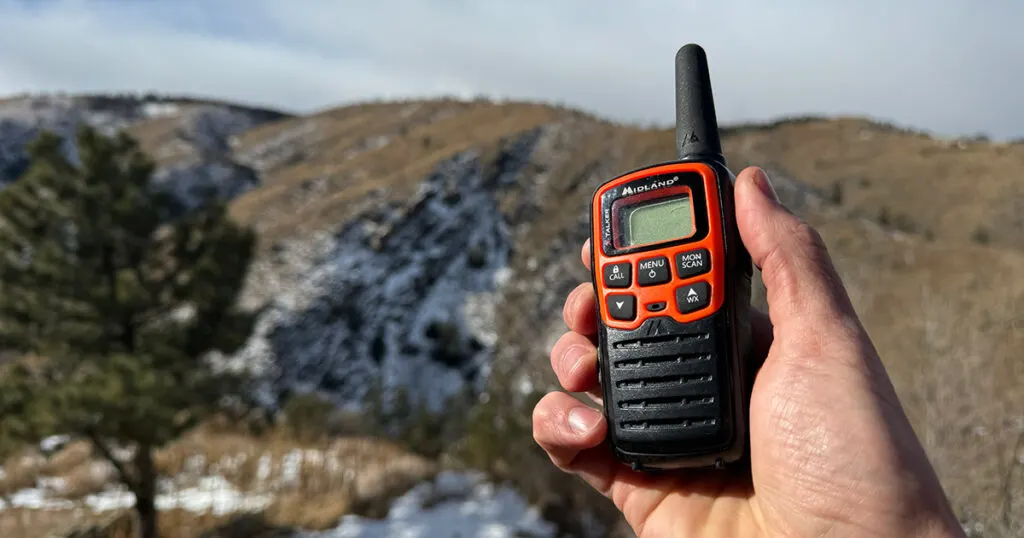
Types of Essential Communication Devices
- Battery-Powered or Hand-Crank Radios: These radios are invaluable for receiving updates, news, and emergency broadcasts. Hand-crank models offer the advantage of not relying on external power sources, making them extremely useful in prolonged power outage situations.
- Walkie-Talkies: For local communication, especially when cell phone networks are down, walkie-talkies can be a practical solution. They are ideal for staying in touch with family members or neighbors within a certain range.
The Role of Communication Devices in Emergencies
- Receiving Updates: In a crisis, staying updated with the latest news and emergency broadcasts can provide critical information about safety, weather, and relief efforts.
- Local Coordination: Communication devices enable coordination with family, friends, and community members, which is essential for mutual aid and support.
- Emergency Contact: In case of personal emergencies, these devices can be used to seek help or communicate with emergency responders if still operational.
Tips for Effective Use of Communication Devices
- Regular Checks and Maintenance: Ensure that your devices are in working order, batteries are charged, and hand-crank mechanisms are functioning.
- Familiarity with Operation: Familiarize yourself and your family members with how to operate these devices. In a high-stress situation, knowing how to quickly use communication tools is vital.
- Backup Power Sources: Have a supply of extra batteries or portable chargers, especially for battery-powered devices. Solar chargers can also be a practical solution for recharging.
- Safe Storage: Store your communication devices in a dry, easily accessible place, ideally in a protective case to shield them from damage.
Prioritizing Hygiene: Essential Sanitation Supplies
Maintaining cleanliness and hygiene becomes a significant challenge during a societal breakdown. Without regular waste removal services and running water, the risk of diseases increases. Stocking up on essential sanitation supplies, including basic items like baking soda and vinegar, is crucial for ensuring a healthy living environment.

- Baking Soda: The Ultimate Multi-Purpose Home Essential
- Vinegar: The Must-Have Item in Your Home Storage Supplies
- Long-Lasting Chemicals for Emergency Preparedness & Home Supply
Basic Yet Effective Sanitation Supplies
- Baking Soda: This versatile compound can be used for cleaning, deodorizing, and even as a mild abrasive. It’s effective for everything from brushing teeth to cleaning dishes and surfaces.
- Vinegar: An excellent natural disinfectant, vinegar can be used for cleaning various surfaces, as a fabric softener, and even for personal hygiene purposes like hair rinsing.
Additional Sanitation Essentials
- Soap and Hand Sanitizer: Regular handwashing is crucial for preventing the spread of germs. In the absence of running water, hand sanitizer is a good alternative.
- Toilet Paper and Moist Towelettes: Stock up on toilet paper. Moist towelettes or baby wipes can also be useful for personal hygiene when water is scarce.
- Bleach: A small amount of bleach can disinfect water for drinking (following proper guidelines) and is excellent for sanitizing surfaces.
- Garbage Bags: Essential for waste management, especially if regular trash services are disrupted.
- Feminine Hygiene Products: For women, having a sufficient supply of sanitary pads, tampons, or menstrual cups is crucial.
- Toothpaste and Dental Hygiene Supplies: Maintaining oral health is important to prevent dental issues, which can be problematic in emergency situations.
Tips for Maintaining Sanitation
- Regular Cleaning Routines: Establish a routine to keep your living space clean and reduce the risk of illness.
- Waste Management: Plan for how to dispose of or compost waste safely.
- Water Conservation: If water is limited, prioritize its use for drinking and cooking over cleaning.
- DIY Cleaning Solutions: Learn how to make effective cleaning solutions from basic supplies like baking soda, vinegar, and bleach.
Equipping for Safety: Weapons and Ammunition
In the uncertain times of a societal breakdown, the ability to defend oneself and procure food through hunting becomes a significant aspect of survival. This makes weapons such as firearms and bows, along with the necessary ammunition, essential components of your preparedness kit. While the primary purpose of these tools is for hunting and self-defense, their use requires responsibility, training, and adherence to safety protocols.
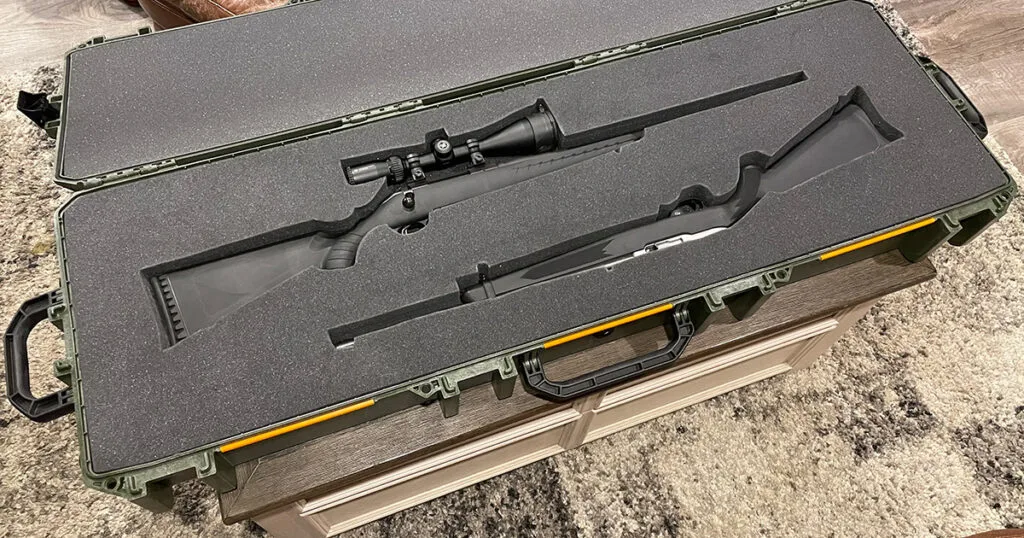
Check this out: Build the Complete Rifle Setup: Small and Large Game on a Budget
Types of Weapons for Survival Situations
- Firearms: A reliable firearm can be a critical tool for both defense and hunting. Different types of firearms, such as rifles, shotguns, and handguns, serve different purposes and require different levels of skill and handling.
- Bow and Arrows: Bows are a more traditional but still effective means for hunting. They have the advantage of being quieter than firearms and the ammunition (arrows) can be reusable.
The Dual Purpose of Weapons: Hunting and Defense
- Hunting: In a situation where conventional food sources are unavailable, hunting can be a viable means of procuring meat. Firearms and bows are both effective tools for this purpose, depending on the game and environment.
- Self-Defense: In times of societal unrest, the need for self-protection can increase. Firearms can provide a significant level of defense, though they should be handled responsibly.
Responsible Ownership and Use of Weapons
- Training and Practice: Proper training in the use and maintenance of any weapon is crucial. Regular practice is also necessary to ensure proficiency and safety.
- Safe Storage: Weapons and ammunition should be stored securely to prevent accidents and unauthorized access, especially in households with children.
- Mental Preparedness: The decision to use a weapon, especially in a defensive situation, requires mental and emotional preparedness. Understanding the implications and responsibilities of using a weapon is as important as knowing how to use it.
Bonus: The Value of Bartering Items in Times of Crisis
In a societal breakdown, traditional currency may lose its value, and the ability to barter could become a crucial survival skill. Items that are in high demand but scarce in supply can become valuable commodities. Liquor and ammunition are classic examples, with the former being useful beyond consumption and the latter valuable even for those who don’t own firearms. Here’s a list of items that could be highly valuable for bartering in such scenarios.
Top Bartering Items in a Survival Situation
- Liquor: Useful not only as a beverage but also as an antiseptic, for preservation, and as a fuel source in some cases.
- Ammunition: In high demand for hunting and protection, ammunition is a valuable commodity, even for non-firearm owners.
- Medical Supplies: Over-the-counter medications, bandages, antiseptics, and prescription drugs can be extremely valuable.
- Food Supplies: Non-perishable foods, especially those that are protein-rich or offer long shelf life, like canned goods, rice, and beans.
- Clean Water and Purification Tools: Bottled water, water filters, and purification tablets.
- Fuel: Gasoline, propane, kerosene, and even firewood can be highly sought after for powering vehicles, generators, and heating.
- Batteries and Power Sources: Batteries of all sizes, solar chargers, and other portable power sources.
- Hygiene Products: Soap, toothpaste, sanitary products, and toilet paper are often overlooked but essential.
- Seeds and Gardening Tools: For long-term survival situations, the ability to grow food is invaluable.
- Clothing and Blankets: Especially in harsh weather conditions, warm clothing, and blankets can be a necessity.
- Tools: Basic tools like hammers, saws, nails, and screws can be in high demand.
- Books and Educational Materials: In prolonged scenarios, books (especially on survival and skill-building) can be valuable for education and entertainment.
Tips for Bartering Effectively
- Know the Value: Understand the relative value of your items and those you’re trading with.
- Safety First: Always prioritize safety in bartering situations. Avoid revealing too much about your own supplies or needs.
- Quality Matters: Items in good condition and working order are more likely to be accepted in trade.
- Diversify Your Supplies: Having a variety of bartering items increases your chances of having something someone else needs.

Susan
Sunday 14th of September 2025
What is the receipe for the laundry detergent?
Cindy Upton
Tuesday 24th of June 2025
Do you sell Rapid Radios?
Lenny
Saturday 23rd of March 2024
Another thing to remember as you gathering supplies over time is to remove as much of the packaging as appropriate before storage. People or looters seeing an abundance of trash (the trash men are not coming when shtf) will quickly be able to decipher what you have inside.
Jessica Dillard
Thursday 22nd of February 2024
Thanks for the great info.
Rob Benson
Thursday 22nd of February 2024
Welcome!
sandy
Thursday 15th of February 2024
You have great details to help make decisions on what is best to prepare for an emergency. I am appreciative of that. I do try to accumulate a "stash" of items in the event we are home with no services. However, I keep hearing about bug out bags which would be a bag with short term items for a quick leave. Do you have a list of items you suggest specifically for that ? A grab and go bag list is what I am trying to compile. I appreciate your thoughts on this.